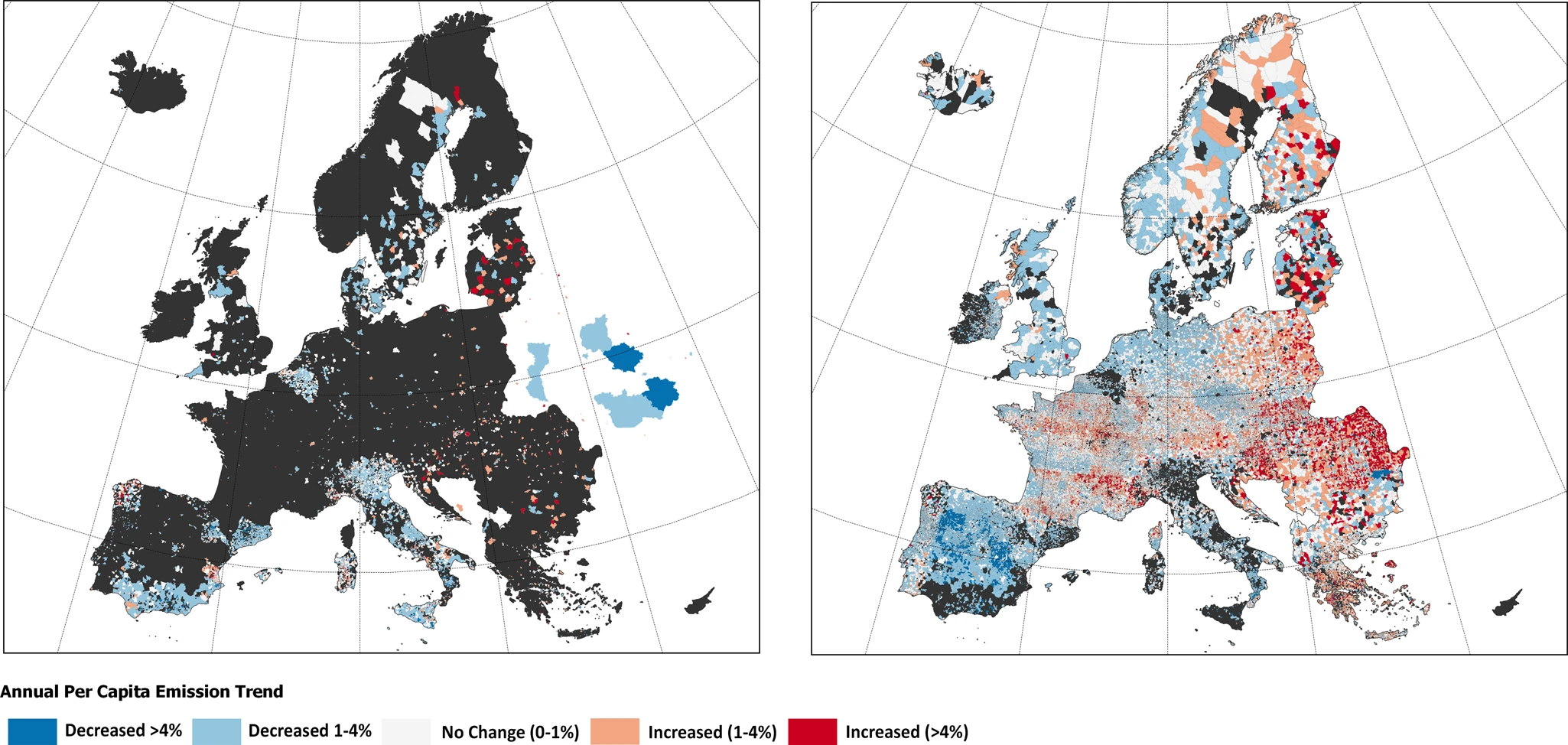
Read the paper published in Nature. This blog was originally published in the Springer Nature Sustainability Community.
Cities have risen to prominence as climate actors in recent years, signing on to international climate initiatives and making pledges and taking action to reduce their greenhouse gas emissions. The scarcity and heterogeneity of emissions data for these subnational governments, however, has made it difficult to evaluate their progress towards these goals.
In our paper, “Predicting European cities’ climate mitigation performance using machine learning,” we present a scalable, replicable machine learning (ML) approach for evaluating cities’ mitigation performance. Building on a 2020 study that examined determinants of city mitigation performance for just over 1,000 cities that signed on to the European Union Covenant of Mayors for Climate and Energy (EUCoM) initiative, this study utilizes self-reported emissions data from EUCoM cities, combined with geospatial data, to develop a ML model that estimates emissions outcomes for over 90,000 cities – nearly all local and municipal actors in the EU and the United Kingdom from 2001 to 2018.
Since 2008, over 10,000 local governments throughout Europe have joined EUCoM. Signatories pledge climate mitigation and adaptation actions and set goals for emissions reductions by 2020 and 2030. Since many of these cities have not reported baseline or monitoring emissions, it is difficult for the public and policymakers to gauge progress towards their goals. When data are reported, it is often heterogeneous due to methodological and reporting difference that make it difficult to compare. Our model uses machine learning and harmonized data to estimate changes in emissions, and evaluate whether a city’s participation in EUCoM has any effect on its emissions over time.
Using machine learning to evaluate emissions data
To train the predictive ML model, we joined self-reported carbon emissions data from about 6,000 cities that signed on to EUCoM with publicly available, spatially explicit data such as emissions from fossil fuels, land surface temperature, dust, geographic boundaries, GDP and population. Our model was able to explain 90% of the variation between European cities’ self-reported emissions data and predicted emissions values.
Cities participating in transnational climate initiatives have decreased emissions and are likely to have achieved 2020 emissions reduction targets
Our research found cities that signed onto EUCoM were likely to have achieved their 2020 emissions reduction targets, and were more likely to reduce emissions than cities that didn’t. While 74% of EUCoM cities likely reduced emissions from their baseline, only 53% of external cities likely reduced emissions in the same time frame. Although the research did not establish a causal link between participation in the EUCoM and emissions reductions, it points out significant differences in emissions reduction between EUCoM and external cities.
Cities who report emissions data achieved greater reductions in emissions than those that do not report data
This study also shows that EUCoM cities who set ambitious emissions reduction targets, established a baseline, and measured and reported results had, on average, greater emissions reductions than EUCoM cities who did not. Prior research suggests that this result is likely due to the fact that the ability to monitor and report emissions reflect a city’s capacity and implementation ability. Reporting is indicative of a city’s “means of implementation,” suggesting that cities that report emissions data likely have financial support to implement activities that would lead to emissions reductions in the first place.
Going forward
While machine learning is a promising technique to help expand available greenhouse gas data (see this National Academy of Sciences report that recommends further development of these hybrid approaches), these methods are only as good as the input data used to train and validate the models. Since the majority of self-reported emissions data comes from European cities, we developed our proof-of-concept method there, with the goal of expanding to subnational entities globally. More data to test and train models for other cities, particularly those in the Global South, will be critical to ensure machine learning models sufficiently capture these contexts and varying emission profiles.Additionally, we also need more research into which particular emissions reductions strategies most effectively reduce emissions to inform policy and urban planning decisions, since this study only reveals the directionality of emissions trends and not the drivers.
Read the full report here.


Recent Comments